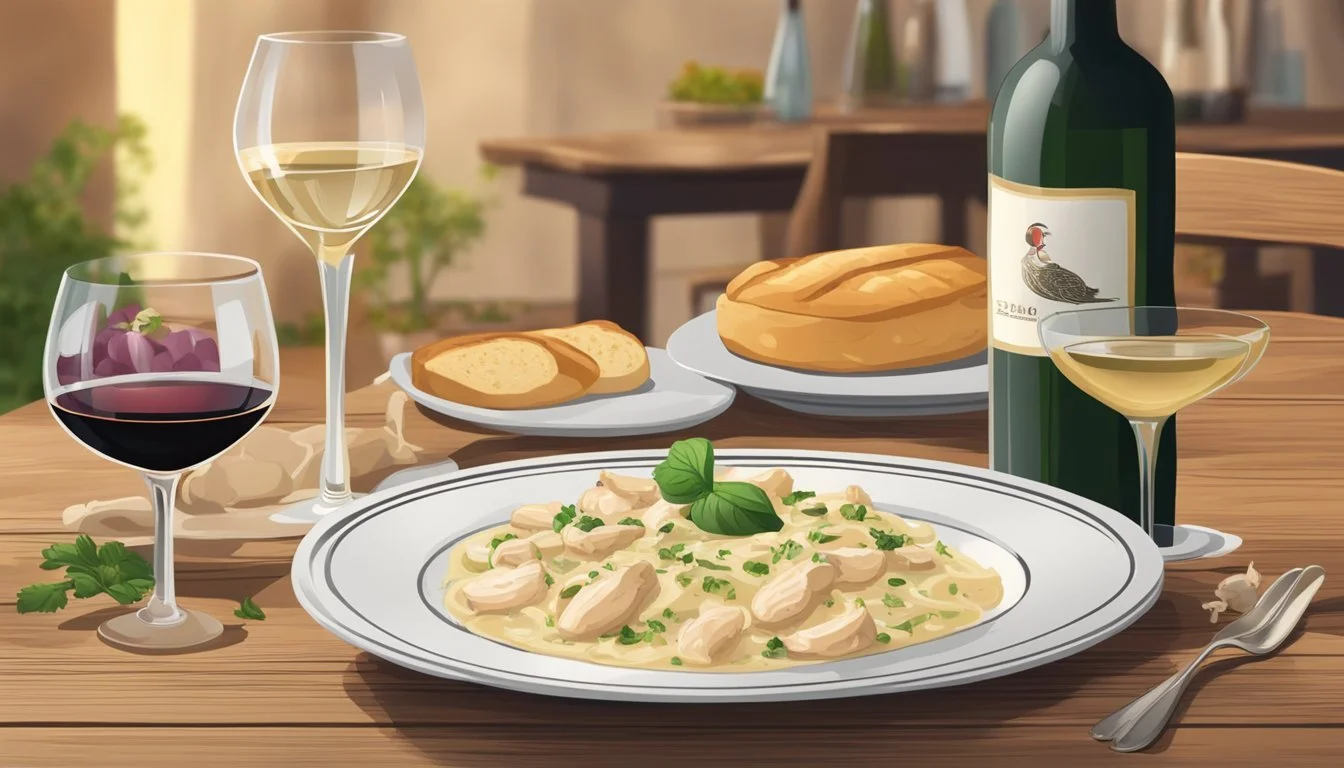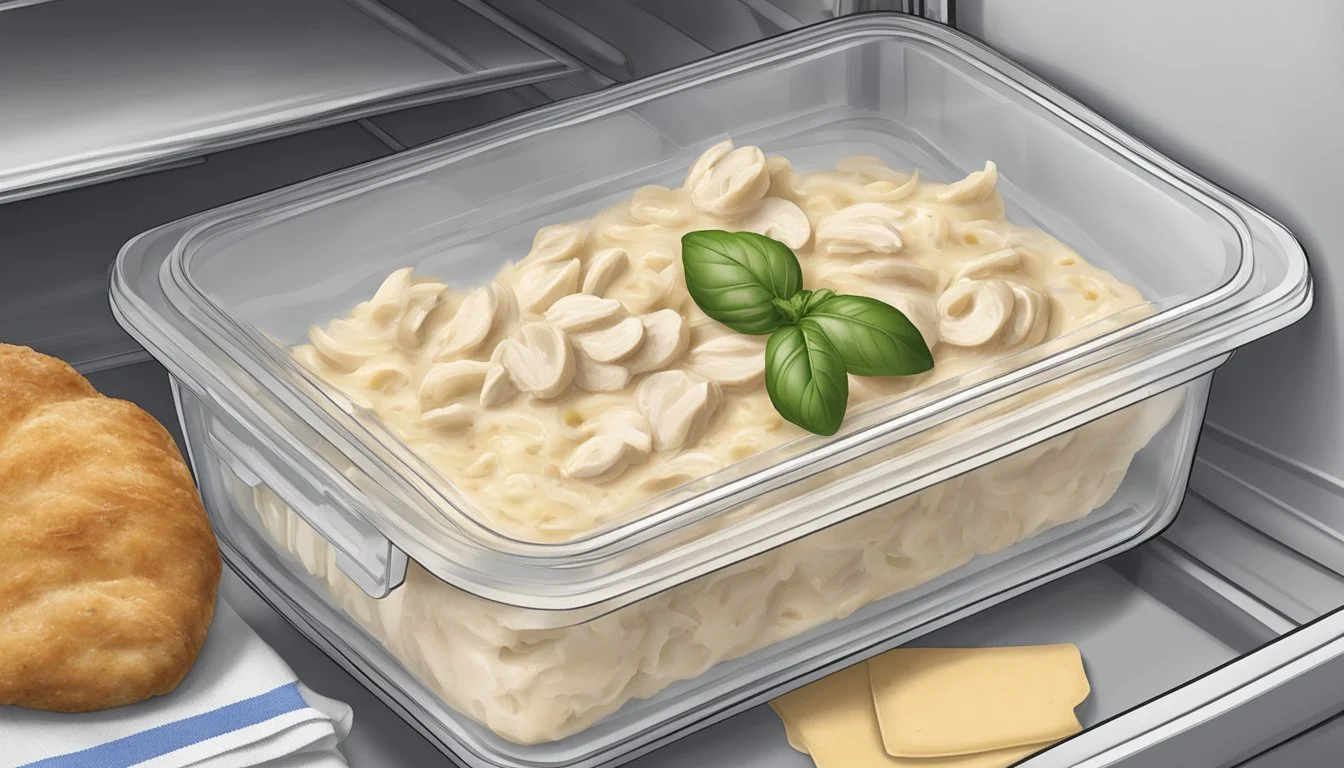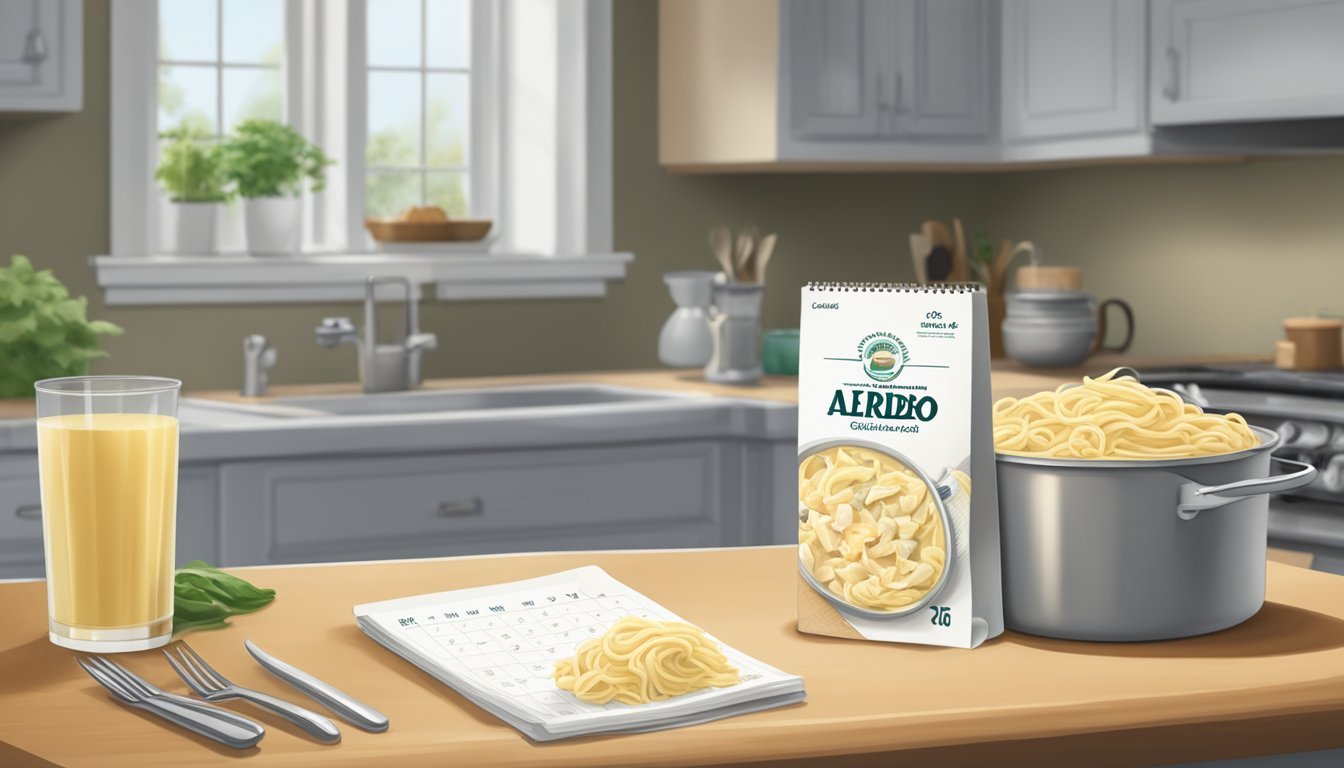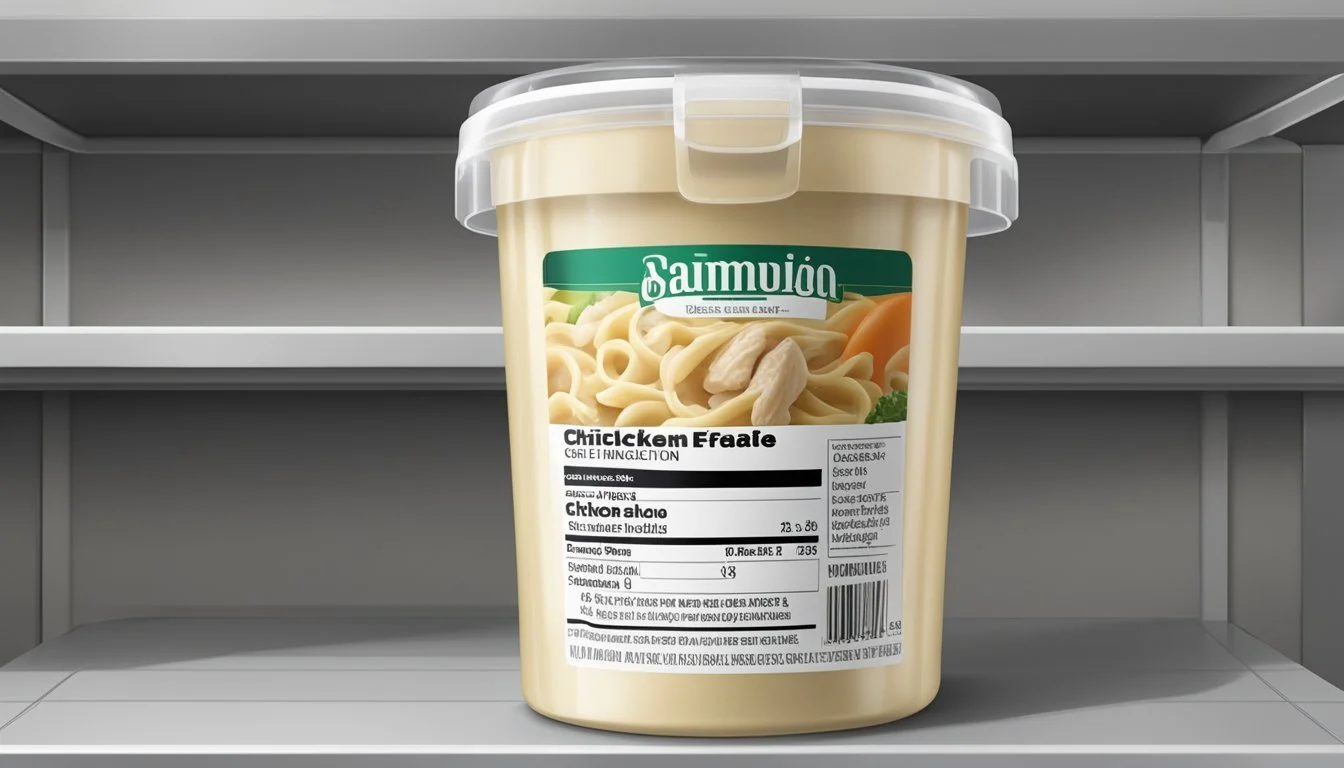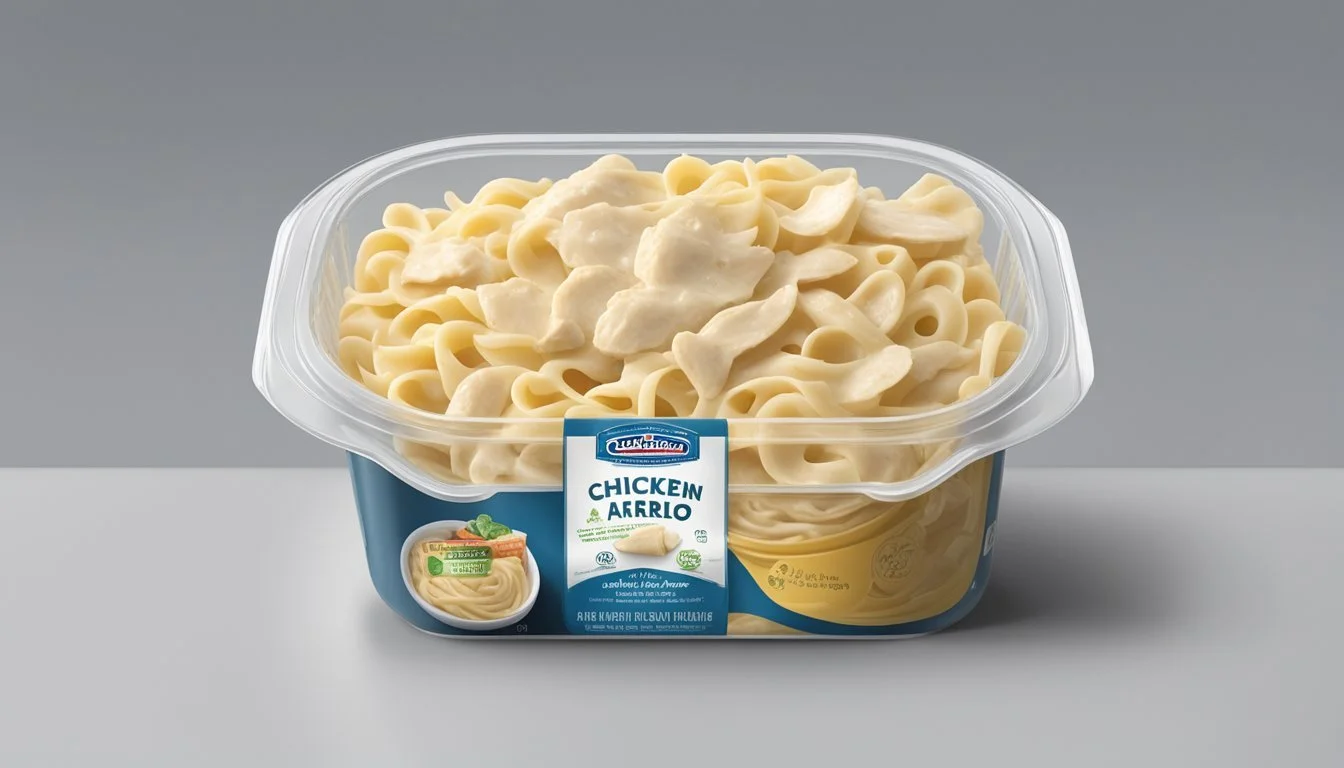How Long Does Chicken Alfredo Last?
Storage Tips and Duration Guide
Chicken Alfredo is a beloved dish that many enjoy for its creamy texture and savory taste. Properly stored in the refrigerator, Chicken Alfredo typically lasts 3-4 days, making it a great option for meal prep and leftovers. The longevity of Chicken Alfredo can extend even further when stored in the freezer, lasting up to four months when properly sealed in an airtight container.
Understanding these timeframes is crucial for maximizing both the taste and safety of your meal. Signs that Chicken Alfredo has gone bad include an unpleasant odor, strange taste, or visible mold, all clear indicators that it should be discarded. For those wondering about reheating, Chicken Alfredo can be safely reheated on the stovetop or in the microwave, ensuring it reaches an internal temperature of 165°F (74°C).
Whether you're planning to cook a big batch or wondering how long last night's dinner will stay fresh, knowing the shelf life of Chicken Alfredo can help you enjoy this delicious dish without worry.
Understanding Chicken Alfredo
Chicken Alfredo is a beloved dish combining rich, creamy ingredients with hearty proteins and carbohydrates. Several components make up this comforting meal, influencing its taste, texture, and shelf life.
Components of Chicken Alfredo
Chicken Alfredo typically features cooked chicken, pasta, and a luxurious sauce made from cream, butter, and parmesan cheese. The pasta provides a sturdy base, while the sauce brings richness.
Cooked chicken adds protein, making the dish more satisfying. When preparing Chicken Alfredo, using high-quality ingredients is essential. Fresh cream and butter contribute to a creamy consistency, while freshly grated parmesan cheese enhances the flavor. Each component plays a critical role in creating the dish's signature taste and mouthfeel.
Factors Affecting Shelf Life
The shelf life of Chicken Alfredo primarily depends on storage conditions. Refrigerated Chicken Alfredo, when stored in an airtight container, stays fresh for 3-4 days. Freezing extends its shelf life to 2-3 months, but it's best to freeze pasta and sauce separately to prevent mushiness.
Temperature plays a crucial role. Chicken Alfredo should not be left unrefrigerated for more than 2 hours to avoid bacterial growth. Proper reheating to an internal temperature of 165°F (74°C) ensures safety. Discard any spoiled food to prevent foodborne illnesses. Proper handling and storage significantly impact the dish's longevity and overall quality.
Storing Chicken Alfredo
Proper storage methods ensure that chicken Alfredo remains safe to eat and retains its quality. Refrigeration and freezing are key to extending its shelf life.
Refrigeration Best Practices
Refrigerate chicken Alfredo to maintain its freshness for 3-4 days. Place it in an airtight container to prevent moisture loss and odor absorption from other foods. If using plastic wrap or aluminum foil, ensure it is tightly sealed over the dish.
Promptly refrigerate chicken Alfredo within 2 hours of cooking to prevent bacteria growth. The fridge temperature should be at or below 40°F (4°C). If the dish has been sitting at room temperature for longer than 2 hours, it should be discarded, as it may be unsafe to eat.
Freezing and Thawing Techniques
Freezing chicken Alfredo extends its shelf life up to 2-3 months. Use freezer-safe containers or vacuum-sealed bags to prevent freezer burn and preserve flavor. Portioning the dish before freezing can make thawing and reheating more convenient.
When ready to eat, thaw the frozen Chicken Alfredo in the fridge overnight. Avoid thawing at room temperature to prevent bacteria growth. Reheat thoroughly to 165°F (74°C) before consuming. The microwave or stove can be used for reheating; stir occasionally to ensure uniform heating.
Determining Freshness and Spoilage
To ensure the safe consumption of chicken alfredo, it is crucial to identify signs of spoilage. This can be done by examining the dish for visual and olfactory clues and understanding the health risks of consuming spoiled food.
Visual and Olfactory Signs
Color: Fresh chicken alfredo maintains a creamy white to light beige color. Discoloration, such as yellowing or darker patches, can indicate spoilage.
Texture: The texture of the sauce should be smooth and thick. Separation of the sauce or a watery consistency can be a sign of deterioration.
Mold Growth: Visible mold, usually green, black, or white fuzzy patches, clearly indicates spoilage and requires immediate disposal of the dish.
Smell: Fresh chicken alfredo should have a pleasant, creamy aroma. An off smell, including sour or rancid odors, indicates bacterial growth and spoilage.
Health Risks of Spoiled Food
Consuming spoiled chicken alfredo poses significant health risks due to the potential presence of bacteria such as Salmonella and E. coli.
Spoiled food can lead to foodborne illnesses with symptoms including nausea, vomiting, diarrhea, and abdominal pain.
Bacteria and Contamination: Bacteria proliferate in spoiled chicken alfredo, increasing the risk of contamination. Bacteria thrive in moist and protein-rich environments, making chicken alfredo particularly susceptible.
Signs of Spoilage: It's essential to discard chicken alfredo at the first sign of spoilage to avoid health risks. Regularly monitoring for changes in smell, texture, and appearance can prevent consumption of contaminated food.
By identifying early signs of spoilage and understanding the health risks, individuals can ensure they consume chicken alfredo while it is still safe and fresh.
Safe Consumption Guidelines
To ensure chicken Alfredo remains safe to eat, it’s crucial to reheat properly and discard leftovers when necessary. These guidelines help maintain food safety and prevent health risks.
Proper Reheating Methods
When reheating chicken Alfredo, aim to achieve an internal temperature of 165°F (74°C) to kill any harmful bacteria. Use a microwave or stovetop to reheat safely.
For the microwave, place leftovers in a microwave-safe container and cover loosely. Heat on high for 1-2 minutes, stirring halfway through.
Alternatively, on the stovetop, add a small amount of water or cream to a pan, then reheat at medium heat, stirring occasionally until hot throughout.
In either method, using a food thermometer ensures the dish reaches the appropriate temperature.
When to Discard Leftovers
Leftovers should be discarded if signs of spoilage appear. Chicken Alfredo can be refrigerated for 3-4 days in an airtight container. If unsure about the freshness, err on the side of caution.
Signs that leftovers should be discarded include:
Off-smell: An unusual or sour smell indicates spoilage.
Texture change: Mold or a slimy texture suggests it is no longer safe.
Appearance: Discoloration or separation of sauce components can signal it’s time to discard.
Ensure food safety by following these guidelines and checking for these signs before consumption.
Maximizing Shelf Life
Proper storage techniques can significantly extend the shelf life of chicken Alfredo, ensuring both freshness and safety.
Preventive Measures to Extend Freshness
Refrigerating chicken Alfredo promptly is crucial. Keep the refrigerator at 40°F (4°C) or below to slow down bacterial growth. Use airtight containers to prevent exposure to air, which can lead to condensation and odors that affect freshness.
Ensure that all perishable ingredients like homemade Alfredo sauce and vegetables are fresh before preparation. Incorporate fresh garlic and herbs to enhance flavor without compromising longevity. Keep store-bought sauces sealed tightly until use.
Tips for Long-Term Storage
For long-term storage, freezing extends shelf life significantly. Store chicken Alfredo in the freezer at 0°F (-18°C) or below. Airtight containers or heavy-duty freezer bags are ideal to prevent freezer burn and contamination.
When thawing, do so in the refrigerator to maintain food safety. Avoid leaving chicken Alfredo at room temperature for more than two hours to minimize the risk of foodborne illnesses. With proper techniques, chicken Alfredo can maintain its quality for up to 2-3 months in the freezer.
Understanding Expiry and Best Before Dates
Recognizing the difference between expiry and best before dates is crucial in determining the shelf life of chicken Alfredo, especially when considering homemade and store-bought variants.
Homemade vs. Store-Bought Alfredo Sauce
Shelf Life:
Homemade Alfredo sauce typically lasts 3-4 days in the fridge. Its shelf life is shorter due to the absence of preservatives. Made from ingredients like heavy cream and milk, homemade sauce spoils faster.
Store-bought Alfredo sauce often contains preservatives, allowing it to last up to 7 days in the fridge after opening.
Storage Tips:
Ensure both types are stored in airtight containers.
For longer storage, both homemade and store-bought Alfredo sauce can be frozen. Homemade sauce generally freezes well for 2-3 months, while store-bought varieties can last around the same time in the freezer.
Indicators of Spoilage:
Signs include a sour smell, discoloration, and altered texture.
These guidelines assist in ensuring a safe and tasty chicken Alfredo experience.

